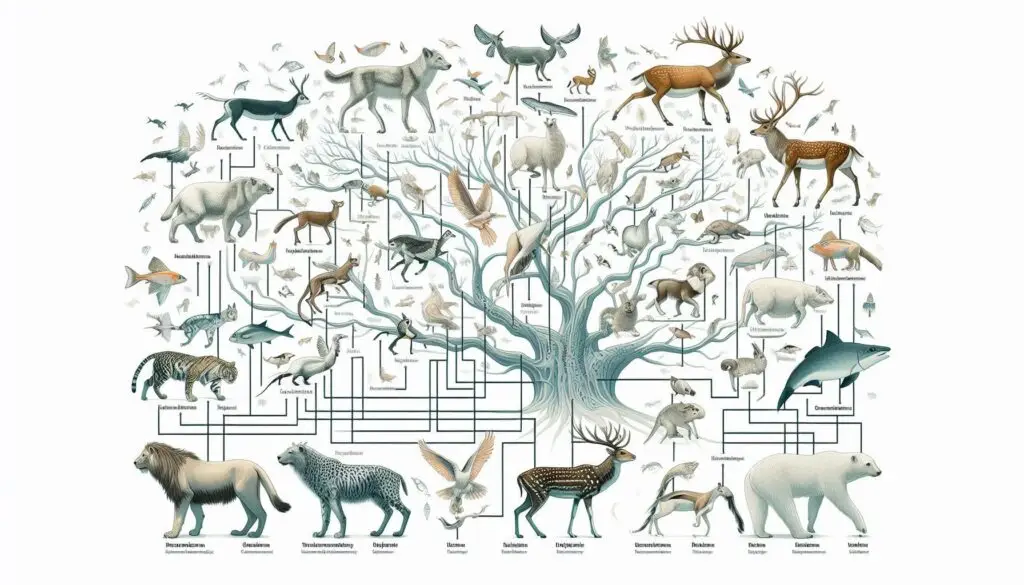Demerits of the Full-Sib Method in Livestock Breeding

Understanding the Full-Sib Method
What is the Full-Sib Method?
The full-sib method involves mating animals that share both parents. This technique aims to concentrate desirable traits within a population. However, while it may seem beneficial at first glance, it carries several risks that can undermine its effectiveness.
The Importance of Genetic Diversity
Genetic diversity is vital for any breeding program. It ensures that a population can adapt to changes in environment and disease pressures. When breeders rely heavily on full-sib matings, they often reduce this diversity. As a result, they may face challenges in maintaining a healthy and resilient livestock population.
Major Demerits of the Full-Sib Method
1. Inbreeding Depression
One of the most significant concerns with the full-sib method is inbreeding depression. This phenomenon occurs when closely related animals breed, leading to a higher chance of offspring inheriting harmful recessive traits.
Effects of Inbreeding Depression
Inbreeding depression can result in:
- Reduced fertility: Animals may struggle to reproduce.
- Lower growth rates: Offspring may not grow as quickly or reach market weight.
- Increased disease susceptibility: Inbred animals often have weaker immune systems.
For more information on inbreeding depression and its effects on livestock, you can read about it here 1.
2. Limited Genetic Progress
While full-sib matings can initially seem advantageous for selecting specific traits, they often limit long-term genetic progress. By focusing too much on certain characteristics, breeders may overlook other important traits.
Consequences of Limited Genetic Progress
- Reduced adaptability: A lack of genetic variation can make a population less capable of adapting to environmental changes.
- Increased risk of genetic disorders: Over time, certain genetic disorders may become more prevalent due to a narrowed gene pool.
For insights into genetic progress in livestock breeding, check out this article here 2.
3. Economic Considerations
Implementing a full-sib breeding strategy can be economically challenging. The costs associated with managing and tracking pedigrees increase significantly when full-sib matings are involved.
Financial Implications
- Higher management costs: Keeping track of pedigrees requires more resources.
- Longer generation intervals: Extensive progeny testing delays returns on investment.
For more details on economic aspects of livestock breeding, visit this resource here 3.
4. Common Environmental Effects
Full-sib families often share similar environmental conditions during their development. This commonality can skew performance data and lead to misleading conclusions about genetic potential.
Environmental Biases
- Misleading performance assessments: If all siblings grow up in similar environments, it becomes difficult to determine true genetic merit.
- Challenges in trait evaluation: Environmental factors may mask or exaggerate traits that are genetically influenced.
To learn more about environmental effects on livestock performance, see this article here 4.
5. Challenges in Selection Intensity
High selection intensity often leads to excessive culling of animals that do not meet specific criteria. This practice can exacerbate inbreeding issues and reduce overall genetic variability within the population.
Impacts of High Selection Intensity
- Loss of potential breeding stock: Culling may remove valuable genetic material from the population.
- Narrowed gene pool: Fewer animals available for breeding increases the risk of inbreeding.
For further reading on selection intensity and its effects on livestock genetics, check this article here 5.
6. Time-Consuming Processes
The full-sib method requires extensive progeny testing before making selection decisions. This process can be time-consuming and resource-intensive.
Delays in Breeding Decisions
- Longer generation intervals: Waiting for progeny to mature delays overall progress.
- Potential loss of valuable genetics: Original sires may no longer be viable for breeding by the time progeny are evaluated.
To understand more about progeny testing and its implications for livestock breeding, you can read this article here 6.
Conclusion
The full-sib method has several significant demerits that can hinder effective livestock breeding programs. From inbreeding depression to economic challenges and environmental biases, these drawbacks highlight the need for careful consideration when choosing a breeding strategy.
More from Genetics and Animal Breeding:
Effective Population Size in Genetics





Responses